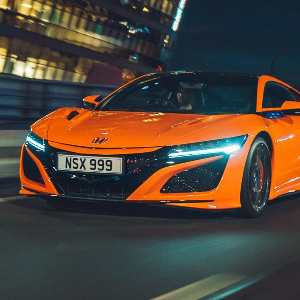
In the early days of the modern electric car, there was a school of thought amongst automotive designers that EVs had to look a bit bonkers. The first generation Nissan Leaf, Renault Zoe and BMW i3, for example, stuck out like a sore thumb against the crop of hatchbacks and super-minis they competed with.
Thankfully, as EVs grew in popularity, marketing folk stepped in and called time on the spiky styling shenanigans, arguing that customers probably didn’t want to be the laughing stock of the street. There are still a few remnants of this in today’s crop of battery-powered cars, the optional wheels on the Mini Electric, the grille on a Renault Zoe and the annoying turquoise ‘e’ on the side of this, the Peugeot e-208 are just a few irksome examples.
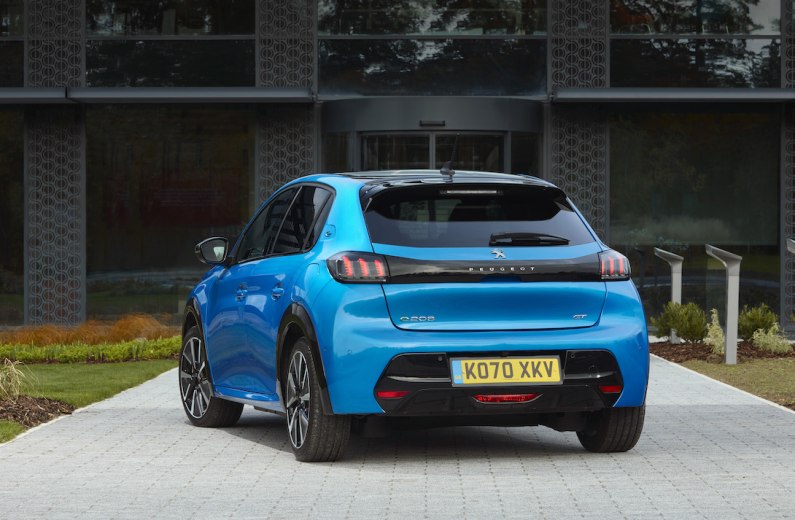
But despite this, the Peugeot e-208 is arguably one of the finest looking EVs on sale today, purely because it’s just as handsome as the current 208 upon which it is based. The fang-like front light signature, the geometric interior, the flared wheel arches, the shapely rear… it’s a desirable little machine to park on a driveway.
It drives well too, boasting the sort of nippiness around town that the 208 has always been famed for, yet it emits nothing from the tailpipes. Here, a 50kW battery and electric motor mounted over the front axle delivers 136hp and torque of 260 Nm. It’s good for a 0-62 time of 8.1 seconds, which makes it the current fastest 208 in the pack. Pending a full-fat GTI, that is.
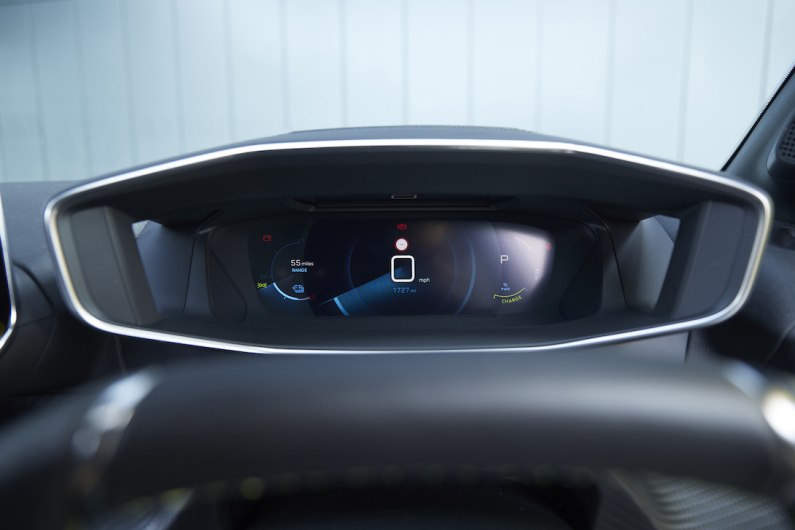
Fighter Cockpit
The interior of the 208, and particularly this e-208, is sharp to say the very least. A central tunnel divides the front dash neatly in two, while dihedral vents, a flat bottomed (and topped) steering wheel and joystick-esque gear lever make it feel like it a Typhoon Eurofighter inside.
There’s a main touchscreen display in the centre of the dash, which has haptic style touch switches lined up some way beneath it. These feel like a fair stretch for taller drivers and the volume control, located on the far left of the bank of switches, takes a considerable reach. Peer through the tiny steering wheel and there’s a new 3D display, which layers information on top of a display to give the illusion of depth.
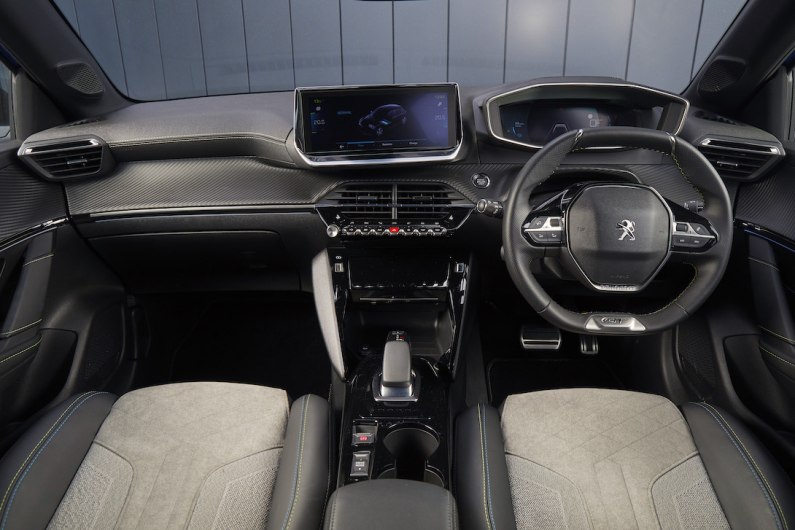
It looks fantastic but I’m not 100 per cent sold on its usefulness. Although it comes into its own when satellite navigation information is pulled up, as the small arrow that represents current position neatly tracks over the road, making it easy to see when a turning is coming up.
The cabin feels fairly cramped though, and there’s not a lot of room in the rear for adults. Especially adults with legs. The Honda e makes much better use of space with its ‘lounge-like’ interior, but then the e-208 is a sleeker, sportier proposition.
This GT Line car also features a nice carbon-effect trim layer that meanders over much of the front surfaces. It oozes quality, even if some of the more hidden plastics are a bit scratchy, but packs the sort of French flair that has occupants wanting to poke and stroke things.
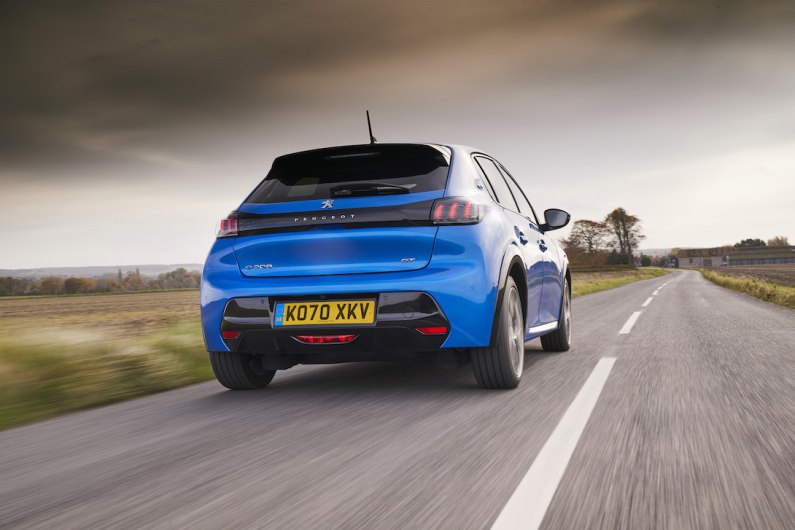
Beyond the City Limits
If you haven’t driven an EV before, the e-208’s acceleration will likely take you by surprise. It delivers all of its torque from 0mph, meaning the diminutive daily driver dashes from rest to an around-town 30mph speed limit in just a few seconds.
Power is driven through the front wheels, but there’s not much in the way of torque steer to worry about. Although the traction control will eagerly kick in if it senses the rubber up front is struggling for grip, cutting power.
There are also several driving modes to choose from, ranging from the energy-extending Eco mode, which limits performance and ekes out as much as it can from the official 217-mile range, to a more potent Sport mode. The latter also firms up the steering and lends the e-208 an added sense of urgency.
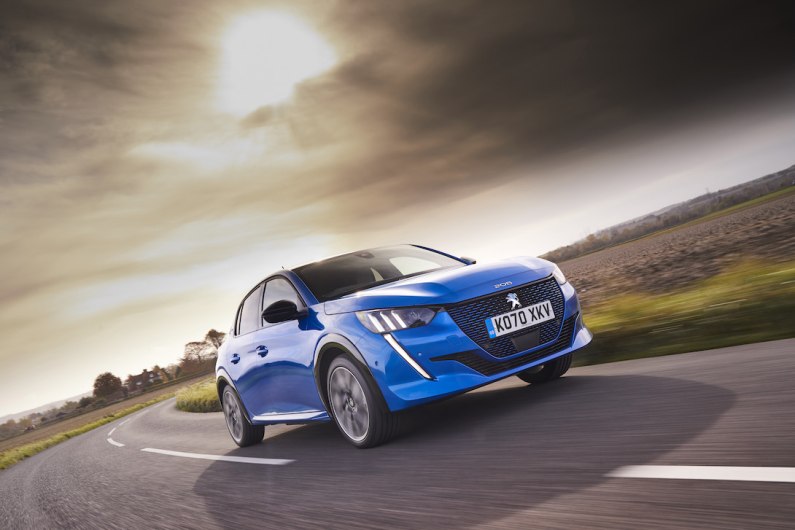
Pull the shapely gear lever backwards and Peugeot’s regenerative braking ramps up a level, essentially slowing the vehicle down when the accelerator is lifted and feeding energy back into the battery packs. It’s no way near as aggressive as Nissan’s ‘e-pedal’ technology or even Mini’s punchiest regen mode, making it difficult to drive on just the one pedal.
Overall, brake pedal feel is one of the biggest let-downs with the e-208. There’s a general spongey feel and modulation is tricky. The first few inches of travel seem to do nothing and then the brakes finally bite. I found myself properly standing on them in a few higher-speed situations where traffic suddenly slowed ahead.
Steering is also a little woolly, with a lot of movement around centre and the sort of lightness that makes it brilliant in a busy Tesco car park but not so much fun when tackling some more technical, faster roads. Maybe these issues will be ironed out with a e-208 GTI version. We can only hope.

Range will likely be an issue, too, because although the official figures are pegged at 217 miles, it’s highly likely you’ll get a fair bit less than that. If you aim for around 180-miles per charge, you shouldn’t be disappointed.
That said, the ability to travel that sort of distance (unlike the similarly priced Mini Electric and Honda e) means longer journeys aren’t out of the question and the e-208 quietly cruises along the motorway with ease. That said, top speed is limited to 93mph, so don't expect to hustle any outside lane hoggers.
Unique chic
The Peugeot e-208 seems the perfect choice for someone wanting an electric vehicle but not one that shouts about it. The styling is, to these eyes at least, perfect, and the all-electric range of 217 miles is enough to handle the demands of regular drivers.
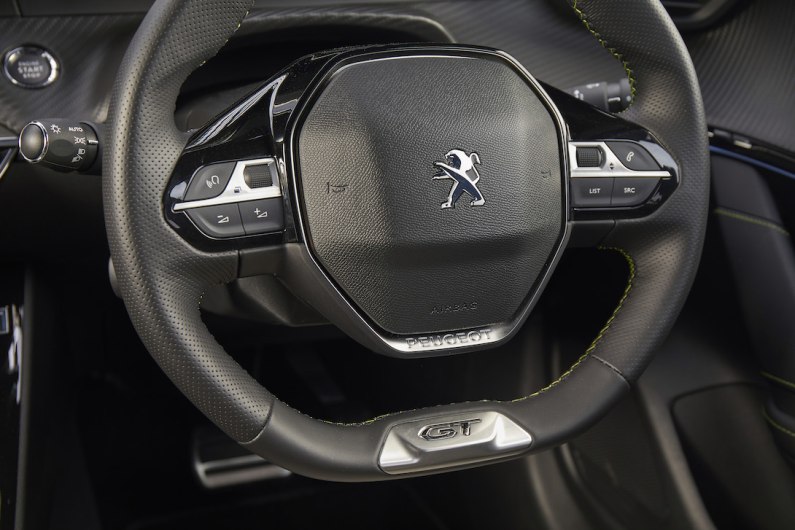
Charging can be complete in as little as 30 minutes and there’s not much in the way of a compromise anywhere else, especially when you stand this electric version up against its petrol and diesel siblings.
The e-208 is a great little car and although expensive for its size, feels like a lot of electric car for the money. It’s just a shame the range isn’t a tad better, because for a couple of grand more, you could have the bigger and slightly higher kWh Volkswagen ID3. Although that certainly ticks every electric vehicle styling cliche box going.
